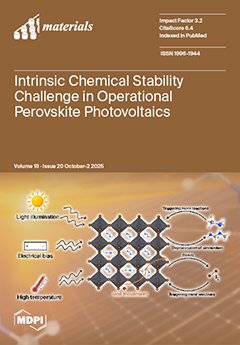This study investigates the fatigue bending strength, measured as the Mean of Fatigue Cycles (N), of cylindrical components produced by external wire arc additive manufacturing (WAAM) through a Taguchi L25 orthogonal array and linear regression analysis. Five welding parameters—welding current (Ampe), offset distance (mm), step length (mm), welding speed (mm/min), and specimen gauge diameter (mm)—were evaluated to maximize N using signal-to-noise (S/N) ratios. Nominal bending stresses (σ) ranged from 45 to 54 MPa, ANOVA on raw replicate data (25 runs, 3 replicates) confirmed specimen gauge diameter = 17 mm and weld current = 125 A as dominant, with F = 171.62 (
p < 0.001, eta
2 = 0.62 [95% confidence intervals (CI) 0.55–0.68]) for specimen gauge diameter and F = 6.13 (
p < 0.001, eta
2 = 0.13 [95% CI 0.08–0.18]) for weld current, accounting for ~75% of the variance. Optimal settings (offset distance = 3.0 mm, step length = 1000 mm, welding speed = 550 mm/min, specimen gauge diameter = 17 mm) achieved S/N = 111.35 dB, predicting N ≈ 350,000–380,000 cycles, a 22–33% improvement. Interactions between specimen gauge diameter and speed, and between weld current and offset distance, suggested enhanced strength at speed = 400–450 mm/min for specimen gauge diameter = 17 mm. Basquin’s law (b ≈ 0.72, R
2 = 0.992) confirmed weld current as key. The linear regression model (adjusted R
2 = 0.9506) had coefficients for specimen gauge diameter (+70,120 cycles/mm,
p < 0.001) and weld current (+1088 cycles/Ampe,
p = 0.02), but lower test R
2 = 0.7212 via cross-validation (60/20/20 split) indicates overfitting due to small dataset size (25 runs), suggesting larger datasets or nonlinear models (e.g., polynomial regression, RSM). Confirmation runs (N = 317,082, 95% CI [287,000–347,000]) validated the results within ~13% error. WAAM reaches 80–90% of traditional manufacturing (TM) fatigue performance, with a 10–20% gap due to the microstructure; recommendations include post-treatments and safety factors (~1.2).
Full article






